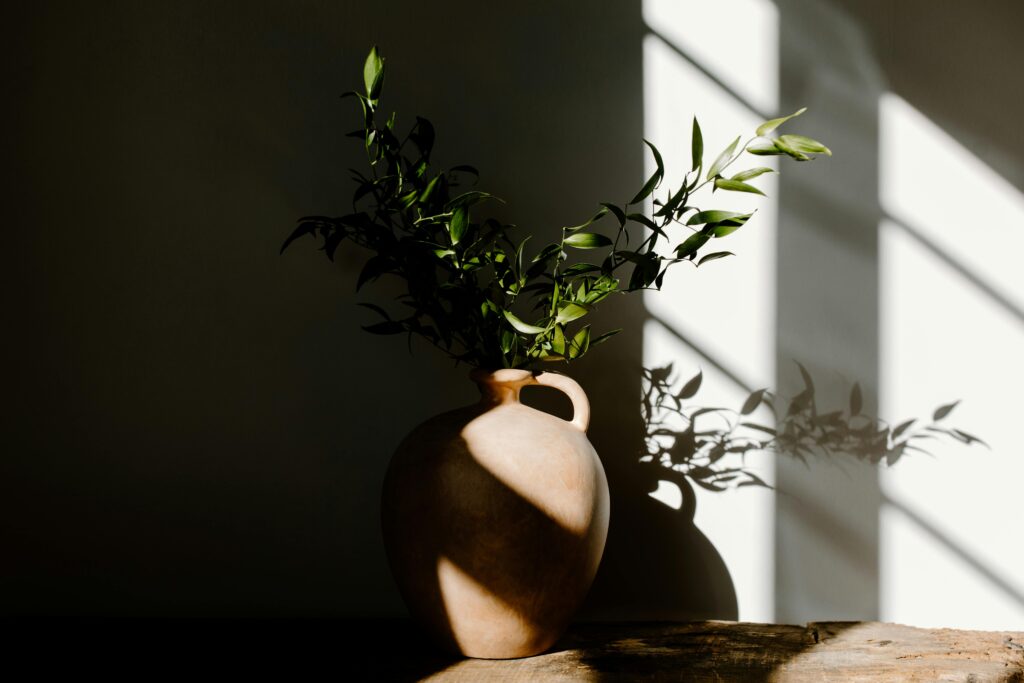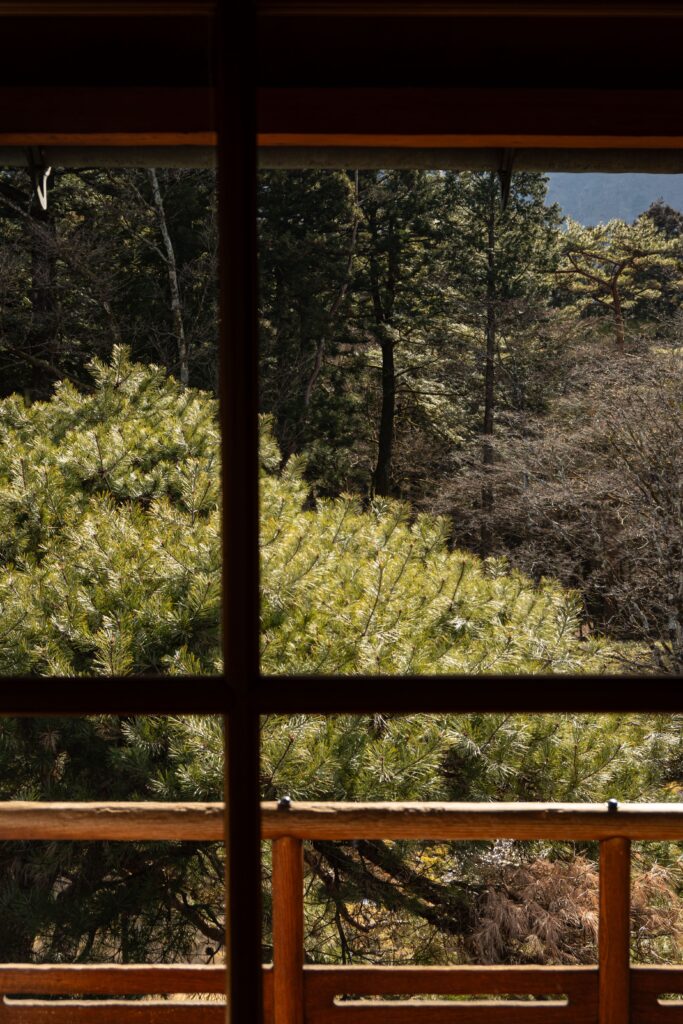Japan’s design principles emphasize balance, modesty, and a focus on the essence of form rather than excessive ornamentation. These principles are evident in architecture, interior design, fashion, and even everyday objects, making Japanese design both timeless and universally admired.
At the heart of Japanese design lie three fundamental principles: Wabi-Sabi, Shibui, and Kanso. These ideas stem from traditional Japanese aesthetics and Zen Buddhist philosophy, each emphasizing different aspects of simplicity, natural beauty, and balance. Additionally, nature plays a critical role, influencing the design of spaces and objects to create an atmosphere of tranquility and harmony. Collectively, these principles form a foundation for designs that are not only aesthetically pleasing but also conducive to a mindful and balanced life.
Japanese design has significantly influenced global design movements, particularly in the 20th and 21st centuries. The minimalist aesthetics of Japanese interiors and product designs have found their way into Western homes, offices, and architectural projects. The rise of minimalism, sustainable design, and the increasing emphasis on mindfulness in modern architecture are all connected to the principles of Japanese design. As the world increasingly values simplicity and sustainability, Japanese design continues to inspire creative professionals globally.
- Wabi-Sabi: The beauty of imperfection
- Shibui: Subtle elegance and restraint
- Kanso: The value of simplicity
- The role of nature in japanese design
- The influence of japanese design globally
- Conclusion
Wabi-Sabi: The beauty of imperfection
Wabi-Sabi is a uniquely Japanese concept that celebrates the beauty found in imperfection, transience, and the natural cycle of life. Rooted in Zen Buddhism, Wabi-Sabi finds value in the modest, weathered, and timeworn—rejecting perfectionism in favor of embracing the organic and the incomplete. The term „wabi“ originally referred to the quiet simplicity and rusticity of life in nature, while „sabi“ pointed to the beauty of aging and the patina of time.
Wabi-Sabi can be found in the irregular shapes of handmade pottery, the faded beauty of wooden furniture, and the weathered textures of outdoor spaces. It finds its beauty in asymmetry, roughness, and the natural wear and tear of objects and materials. This aesthetic encourages the viewer to appreciate the impermanent and fleeting aspects of life—celebrating growth, decay, and the passage of time rather than striving for pristine perfection.
In design, Wabi-Sabi influences everything from furniture to architecture, encouraging the use of natural materials like wood, stone, and clay. It leads to designs that are intentionally simple, unpolished, and in tune with the natural environment. This aesthetic can be seen in modern Japanese tea houses, where the emphasis is on a rustic, yet serene, environment that reflects imperfection and humility. Wabi-Sabi encourages us to find beauty in the mundane and the imperfect, offering a counterpoint to the often overly polished and pristine world of modern design.
Shibui: Subtle elegance and restraint

Shibui refers to an understated, subtle elegance that emphasizes simplicity, restraint, and refined beauty. Unlike the more obvious grandeur or loud opulence, Shibui is an aesthetic that values quiet sophistication, where beauty is revealed through a restrained, unshowy quality. The concept evokes a sense of serenity and quiet grace, where the design’s quality becomes apparent not through excess, but through its deep simplicity and understated charm.
Shibui manifests in designs that avoid excessive ornamentation or clutter, favoring clean lines, muted colors, and simplicity in form. In interior design, this might mean the use of natural, high-quality materials such as wood or stone, with minimalistic furnishings that promote relaxation and tranquility. In fashion, Shibui is seen in garments that feature simple silhouettes, elegant cuts, and fabrics that age beautifully. It’s about creating an environment or object that, over time, reveals its full beauty without being immediately obvious.
One of the most prominent examples of Shibui can be found in Japanese interiors, where design elements are often minimal but carefully selected to create a harmonious balance. The absence of clutter, the use of muted tones, and the incorporation of natural elements contribute to an overall sense of peace and subtle beauty. Furniture pieces may have a simple design but feature the rich texture of natural wood or soft upholstery that becomes more beautiful with age.
Kanso: The value of simplicity
Kanso is the Japanese principle of simplicity, focusing on the elimination of unnecessary elements. The concept promotes a minimalist approach to design, where every detail is purposeful, and nothing is extraneous. Kanso suggests that true beauty lies in simplicity, clarity, and functionality. This principle encourages the use of clean lines, clear forms, and the avoidance of clutter.
Kanso encourages the use of simple, functional designs that do not rely on excessive decoration. In Japanese architecture, for example, Kanso is reflected in open floor plans, where spaces are uncluttered and serve a clear, functional purpose. The designs of furniture, such as tatami mats or low wooden tables, emphasize practicality, comfort, and simplicity. Every element has a purpose, and there is a deliberate avoidance of ornamental excess.
In everyday objects, Kanso can be seen in the design of utensils or household items that prioritize ease of use and functionality over embellishment. The design of kitchenware, such as simple ceramic bowls and wooden spoons, reflects Kanso’s emphasis on utility and elegance. By stripping away unnecessary elements, Kanso achieves a harmony that is both aesthetically pleasing and practical.

The role of nature in japanese design
Connection to Nature
Nature has always played an integral role in Japanese design, with many traditional and modern designs striving to create a harmonious relationship between the built environment and the natural world. This deep respect for nature is not only reflected in the materials used—such as wood, stone, and paper—but also in the way buildings and interior spaces are designed to bring the outdoors inside.
Zen and Nature
Zen Buddhism profoundly influenced the design of Zen gardens and traditional Japanese interiors, where simplicity, tranquility, and connection with nature are central. The minimalist design of a Zen garden, with its carefully placed rocks and raked gravel, is intended to evoke calmness and contemplation, allowing one to connect deeply with the natural world. Similarly, shoji screens and tatami rooms blur the lines between indoor and outdoor spaces, creating an environment where nature is always present and accessible.
Examples in Architecture
In modern Japanese architecture, nature continues to be a focal point, often with floor-to-ceiling windows, indoor gardens, or the use of natural light to create a sense of openness and serenity. Buildings like Naoshima’s Benesse House Museum integrate nature into their design, allowing visitors to experience art in spaces that are deeply connected to their environment. Architects today continue to use traditional materials and methods to connect spaces to the landscape, creating environments that inspire mindfulness and calm.
The influence of japanese design globally
Japanese design principles have had a profound influence on global design movements, particularly in the realms of minimalism and sustainable architecture. The emphasis on simplicity, nature, and functionality has permeated Western design, especially in the realms of interior design, furniture, and urban planning.
The minimalist movement, which gained significant traction in the 20th century, directly draws inspiration from Japanese design principles such as Kanso and Shibui. Architects and designers worldwide now embrace these concepts to create functional, calming, and beautiful spaces that promote well-being and balance.
The principles of Japanese design have been adopted globally, with variations influenced by local cultures and needs. In the United States, for example, Japanese-inspired Zen gardens and tea rooms have become a symbol of calm in otherwise busy urban spaces. Similarly, the growing emphasis on sustainable design around the world—using natural materials, creating energy-efficient spaces, and incorporating biophilic design—mirrors Japan’s respect for nature and its integral role in architecture and design.

As the world increasingly focuses on sustainability, Japanese design offers a model for environmentally conscious, simple living. The minimalist movement, with its focus on reducing excess and making do with less, mirrors Japan’s long-standing cultural practices of living simply and harmoniously with nature. By reducing consumption and emphasizing quality over quantity, Japanese design continues to guide global conversations around sustainability.
Conclusion
The core principles of Japanese design—Wabi-Sabi, Shibui, Kanso, and the connection to nature—are timeless and continue to resonate globally. These principles highlight the importance of simplicity, imperfection, and harmony, creating designs that are not only aesthetically pleasing but also deeply rooted in the cultural values of mindfulness, balance, and respect for the environment.
Japanese design offers a philosophy that transcends style and fashion, encouraging us to find beauty in simplicity and to connect more deeply with our surroundings. The principles of Japanese design continue to inspire individuals and designers across the world to create spaces that foster tranquility, sustainability, and balance.
As the world moves toward more sustainable and mindful living, the principles of Japanese design will likely continue to shape future trends. In a time of constant change, Japanese design offers a grounded approach, reminding us of the value of simplicity, imperfection, and our connection to nature. As we navigate the future of architecture, design, and urban living, these principles will remain a guiding force for creating spaces that are not just functional but also beautiful, harmonious, and meaningful.







